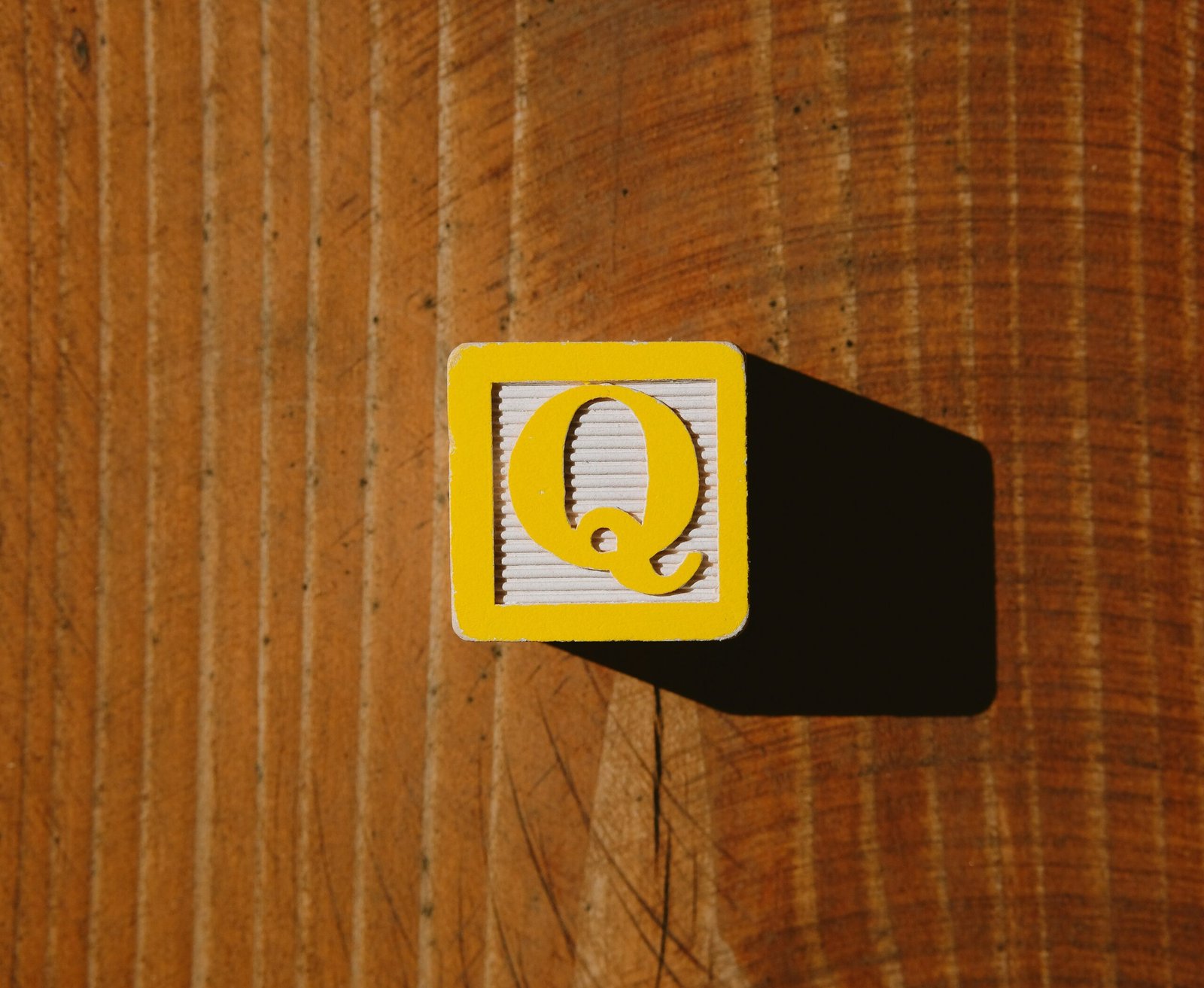Introduction to Hilbert Problems
The Hilbert Problems, a renowned series of challenges posed by the mathematician David Hilbert in 1900, have significantly influenced both the realms of science and philosophy. These problems, totaling 23, were presented during the International Congress of Mathematicians in Paris and aimed to shape the future of mathematical research. By identifying key areas where rigorous investigation was necessary, Hilbert sought to inspire mathematicians to explore uncharted territories and address foundational issues in mathematics.
Historically, the Hilbert Problems emerged at a time when mathematics was becoming increasingly abstract and rigorous. Hilbert’s call to action resonated deeply with the mathematical community, igniting intense research into fundamental questions. The first problem, concerning the consistency of arithmetic, directly challenged mathematicians to contemplate the underpinnings of mathematical logic, foreshadowing debates that would later be framed by Gödel’s incompleteness theorems. As a result, Hilbert’s Problems not only serve as a roadmap for mathematical exploration but also highlight the intricate relationship between mathematics, logic, and philosophical inquiry.
The significance of these problems extends beyond pure mathematics; they have implications for various scientific fields, including physics, computer science, and economics. For instance, the complexities articulated in the famous 10th problem, which addresses the solvability of polynomial equations, have ramifications in number theory and algorithmic research. As researchers delve into problem-solving, they stand at the intersection of logical inquiry and philosophical reflection, continuously questioning the nature of truth and existence in the mathematical universe.
Today, the legacy of Hilbert’s Problems persists, inviting contemporary scholars to revisit unanswered questions and explore the evolving dynamics between science, philosophy, and mathematics. Through this exploration, the doors to potential breakthroughs remain ajar, suggesting that the mysteries surrounding these problems are far from resolved and will continue to captivate intellectual minds for generations to come.
The Historical Context of Hilbert Problems
The Hilbert Problems, articulated by the eminent mathematician David Hilbert in 1900 during the International Congress of Mathematicians in Paris, have profoundly influenced the landscape of modern mathematics. Hilbert, recognized for his rigorous approach to mathematical foundations, proposed a list of 23 unsolved problems that encompassed various mathematical fields such as algebra, number theory, and topology. This initiative not only aimed to articulate the existing challenges within mathematics but also sought to inspire future research directions.
At the turn of the 20th century, mathematics was undergoing significant transformations, with new theories and concepts emerging, notably in set theory and mathematical logic. Hilbert’s proposals were paramount in shaping the methodology of mathematicians who followed. They served to map the boundaries of knowledge at that time and illuminated the paths for future inquiry, forming a bridge between classical and contemporary mathematics. His problems have drawn the interest of mathematicians worldwide, leading to important advancements throughout the 20th century and beyond.
As the years progressed, the impact of the Hilbert Problems extended beyond mathematics, intersecting with fields such as computer science, physics, and philosophy. For instance, the problem of decidability is intimately linked to the foundations of computer science. Moreover, Hilbert’s vision for mathematics as a pursuit grounded in finite and formal processes has sparked discussions in the philosophy of mathematics, especially regarding the nature of mathematical truth and proof. Thus, Hilbert’s work has transcended disciplinary boundaries, offering a rich tapestry of inquiry that continues to inform various domains of scientific thought.
In sum, the historical context of the Hilbert Problems reflects a pivotal moment in the evolution of mathematical thought, one defined by the aspiration to confront the unknown and navigate the complexities of intellectual inquiry. Understanding the origins and consequences of these problems sheds light on their lasting legacy in modern science and philosophy.
Understanding the Basic Concepts
Hilbert Problems are a foundational aspect of mathematical inquiry and philosophy, originally proposed by mathematician David Hilbert in 1900. These problems consist of a set of 23 unsolved questions that address various domains of mathematics and illuminate the boundaries of mathematical knowledge. Hilbert’s aim was not solely to provoke mathematical exploration but also to inspire a deeper philosophical understanding of the nature of mathematics itself.
At the core of the Hilbert Problems is the distinction between decidable and undecidable propositions. Decidable problems are those for which a definitive solution exists, whereas undecidable problems resist resolution within the framework of established mathematical theories. This distinction underscores a significant philosophical consideration: the limitations of formal systems, as shown by Gödel’s incompleteness theorems, which suggest that no comprehensive system can encapsulate all mathematical truths. Thus, the Hilbert Problems become a pivotal discussion point in both mathematics and philosophy.
Another important aspect of these problems is their interconnectedness; many of them influence diverse fields such as algebra, number theory, topology, and mathematical logic. For instance, the Riemann Hypothesis, one of the most famous Hilbert Problems, examines the distribution of prime numbers and has profound implications for number theory and mathematical analysis. The attempt to solve this hypothesis engages not only mathematicians but also philosophers as they ponder its implications on the nature of infinity and mathematical existence.
The relevance of Hilbert Problems in contemporary discussions cannot be understated. They motivate ongoing research and exploration in mathematics while also inviting philosophical questions about the nature of mathematical reality, the limits of human knowledge, and the structure of logical reasoning. Understanding these fundamental principles paves the way for a deeper engagement with both scientific inquiry and philosophical exploration. As mathematicians strive to address these profound challenges, they continuously reshape our understanding of the universe and our place within it.
Prominent Hilbert Problems and Their Implications
The Hilbert Problems, presented by the mathematician David Hilbert in 1900, continue to resonate within the realms of mathematics, physics, and computer science. Among these 23 problems, several stand out due to their profound implications and the intellectual curiosity they inspire. For instance, the Riemann Hypothesis, the second problem on Hilbert’s list, remains one of the most crucial unsolved problems in mathematics. It posits that all non-trivial zeros of the Riemann zeta function lie on a critical line in the complex plane. This hypothesis, if proven, would not only deepen our understanding of prime numbers but also potentially transform number theory and its applications in cryptography.
Another significant problem is the Continuum Hypothesis, which addresses the nature of infinity and the sizes of infinite sets. This problem’s implications stretch into set theory, topology, and even philosophical inquiries about the nature of mathematical existence. Its resolution has far-reaching consequences for the foundations of mathematics, influencing how mathematicians understand and construct their theories.
Furthermore, Hilbert’s tenth problem challenges researchers to develop an algorithm that can determine whether a given polynomial equation has an integer solution. The problem was proven to be undecidable, showing that no such algorithm can exist. This result has expansive implications in computer science, particularly in areas related to algorithmic theory, and continues to incite discussions about the limits of computability.
Hilbert’s problems are not confined to theoretical discussions. They have fueled extensive research, leading mathematicians and scientists to discover new territories. For instance, quantum computing’s evolving landscape is deeply influenced by foundational questions raised by these problems. As researchers continue to explore these profound inquiries, the legacy of the Hilbert Problems remains ever-relevant, fostering innovation in various scientific domains.
The Philosophical Dimension of Hilbert Problems
The Hilbert Problems, articulated by David Hilbert in 1900, not only challenged mathematicians but also provoked profound philosophical questions about the nature of knowledge, the concept of truth, and the boundaries of human understanding. Each problem, emanating from a deep-rooted conviction in the power of mathematics, poses inquiries that extend beyond mere mathematical rigor and dive into epistemology and metaphysics. Philosophers and mathematicians alike have pondered the implications of these problems, questioning whether the solutions reside within human cognitive capacities or lie beyond our reach.
One of the prevailing philosophical inquiries stemming from Hilbert’s work concerns the idea of mathematical truth. Are mathematical entities, such as numbers or geometric shapes, discovered in an objective reality, or are they constructs of human thought? This interrogation leads to the debate between realism and constructivism in mathematics. Realists assert that mathematical truths exist independently of human minds, while constructivists contend that mathematical knowledge is a product of human language and cognition. Hilbert’s Problems serve as a catalyst for this discussion, as their very nature—some resolvable and others potentially insurmountable—challenges our assumptions about knowledge acquisition.
Furthermore, the concept of completeness in mathematical systems, as underscored by Gödel’s incompleteness theorems, reverberates through philosophical discourse. If certain mathematical truths cannot be proven within a given system, what does this imply about the limits of human understanding? The Hilbert Challenges invoke a deeper examination of how we delineate knowledge, compelling us to reflect on what it means to truly “know” something in mathematics. Thus, the intersection of Hilbert Problems and philosophical inquiry forms a rich tapestry of dialogue, urging us to explore avenues of thought that encompass both the abstract world of mathematics and the intricate depths of philosophical reasoning.
Real-World Applications and Examples
The Hilbert Problems encompass a broad spectrum of mathematical concepts that have found significant applications across various scientific fields. One of the most prominent real-world implementations is noted in the field of computer science, particularly in algorithm development and optimization. Many of the problems presented by David Hilbert in 1900 have laid the groundwork for advancements in computational theory, influencing how algorithms are designed and executed. For example, the problems concerning the foundations of mathematics have led to the development of formal verification methods in software engineering, ensuring that programs operate according to specified requirements.
Moreover, Hilbert’s inquiries into number theory have practical applications in cryptography, a critical component of digital security. Modern encryption techniques often rely on complex mathematical concepts derived from Hilbert’s problems. The intrinsic relationship between prime numbers and encryption algorithms underscores the ongoing relevance of these theoretical discussions in the age of information technology, where securing data is paramount.
In physics, Hilbert’s problems relating to the axiomatization of mathematical theories have influenced quantum mechanics. The mathematical framework required to describe quantum systems draws heavily from concepts explored in Hilbert’s work. For instance, Hilbert spaces have become a cornerstone in the formulation of quantum states and observables, impacting various technologies, including quantum computing and quantum cryptography.
Furthermore, the understanding of problems related to calculus of variations and partial differential equations has permeated fields such as engineering and economics, leading to optimized designs and predictive modeling. The practical relevance of the Hilbert Problems extends beyond pure mathematics, affecting sectors such as aerospace engineering and financial analytics.
These examples illustrate that the Hilbert Problems, despite their theoretical nature, have led to concrete advancements that influence technology and scientific thought, demonstrating the manifold ways in which theoretical mathematics can manifest in real life.
Related Theories and Concepts
The exploration of Hilbert Problems brings forth a rich tapestry of interrelated mathematical and philosophical theories, prominently featuring Gödel’s incompleteness theorems. In 1931, Kurt Gödel revealed profound insights into the limitations of formal systems, demonstrating that within any sufficiently powerful mathematical framework, there exist propositions that cannot be conclusively proven or disproven using the rules of that very system. This groundbreaking work not only altered the landscape of mathematical logic but also posed significant philosophical inquiries about the nature of mathematical truth and the capabilities of human reasoning.
The implications of Gödel’s theorems resonate deeply within the realm of Hilbert’s ambitions. David Hilbert, a renowned mathematician, famously sought a complete and consistent set of axioms for all mathematics, a goal that was directly challenged by Gödel’s findings. Gödel highlighted that no single formal system could encapsulate all mathematical truths, leading to a re-evaluation of Hilbert’s program. Furthermore, the existence of undecidable propositions within mathematical frameworks prompted considerable reflection on the nature of proof and knowledge in mathematics, introducing a philosophical dimension to the discussion.
Additionally, the relationship between Gödel’s work and Hilbert’s Problems underscores the intersection of epistemology and mathematics. The concepts of provability, truth, and the limits of human reasoning invite scholars to reflect on more than just mathematical constructs; they inquire into the very essence of what it means to know and understand. Such philosophical dilemmas are also portrayed in discussions about set theory, logic, and even computation, wherein the boundaries between what can be computed and what can be known are continually examined. The interplay between these theories illustrates how mathematics is not merely a collection of numbers and formulas but a profound exploration of the human capacity for understanding the universe.
Lessons Learned from Hilbert Problems
The exploration of Hilbert Problems has yielded significant insights that transcend the boundaries of mathematics, influencing both scientific inquiry and philosophical thought. At its core, Hilbert’s work serves as a reminder of the intricate relationship between abstract theory and practical application. Each problem elucidates complexities that may seem esoteric at first but, upon closer examination, reveal fundamental truths about the nature of knowledge and understanding.
One key lesson drawn from Hilbert’s overarching framework is the importance of formulating precise questions. A well-defined problem can lead not only to deeper mathematical exploration but also to broader implications across various disciplines. This lesson resonates strongly in contemporary science, where meticulously crafted hypotheses are pivotal for experimental success and theoretical breakthroughs. Hilbert’s Problems underscore the necessity of clarity in inquiry—both in mathematical formulation and broader scientific investigation.
Additionally, the pursuit of these problems illustrates the enduring nature of curiosity and the human drive to question and explore. History shows that even mathematical conjectures deemed intractable can eventually yield to persistent investigation. This spirit of perseverance cultivates innovation, fostering an environment where intellectual exploration leads to unexpected discoveries. Consequently, Hilbert’s influence extends beyond mathematics; he inspires a culture of inquiry in philosophy by challenging thinkers to confront abstract concepts with rigor and determination.
Moreover, Hilbert Problems compel us to recognize the limitations of current knowledge and the potential for future exploration. They pose critical challenges that inspire subsequent generations to develop new methodologies and frameworks, perpetuating a cycle of knowledge advancement. As we reflect on these lessons, it becomes evident that the quest initiated by Hilbert is not merely an academic endeavor but a vital component of the human experience, urging us to continually seek understanding in an ever-evolving landscape of ideas.
Concluding Thoughts and Open-Ended Questions
Throughout this exploration of Hilbert Problems, we have delved into their profound implications at the intersection of science and philosophy. The Hilbert Problems, proposed by the mathematician David Hilbert in 1900, represent a collection of significant challenges that have shaped mathematical inquiry and the broader scientific landscape. By addressing these questions, we not only engage with mathematical theory but also confront fundamental philosophical predicaments pertaining to knowledge, epistemology, and the very nature of existence.
We have seen how specific Hilbert Problems, such as the Continuum Hypothesis and the Riemann Hypothesis, serve as pivotal points for ongoing research and debate within mathematical circles. These problems not only highlight the limitations and boundaries of mathematical thought, but they also raise essential queries regarding the nature of truth and proof in a mathematical context. Furthermore, the exploration of what constitutes a problem worth investigating has significant implications for how we approach scientific inquiry and knowledge production.
As we conclude this discussion, it is worth reflecting on the broader implications of the Hilbert Problems in our own lives. How do the challenges posed by these mathematical questions influence our understanding of abstract concepts in everyday problem-solving? Are there parallels between Hilbert’s challenges and the personal dilemmas we face in our own lives, where a clear solution may elude us despite rigorous reasoning and contemplation?
Additionally, we must consider the role of interdisciplinary approaches in addressing these mathematical enigmas. The intersection of mathematics, philosophy, and other fields opens avenues for innovative thinking and collaborative problem-solving. Thus, we encourage readers to contemplate the future trajectory of mathematical research and its potential interactions with other domains of knowledge. How might engagement with Hilbert Problems inspire new paradigms in scientific exploration, and what questions remain unanswered in our quest for understanding?






1 Comment
The Role of Logic and Paradoxes in Scientific Thought - PHỤ KIỆN VĂN PHÒNG
02/21/2025 - 8:12 AM[…] its foundations and assumptions. This interplay has led to groundbreaking discussions, from Hilbert’s problems to Russell’s paradox and even debates on genetic […]